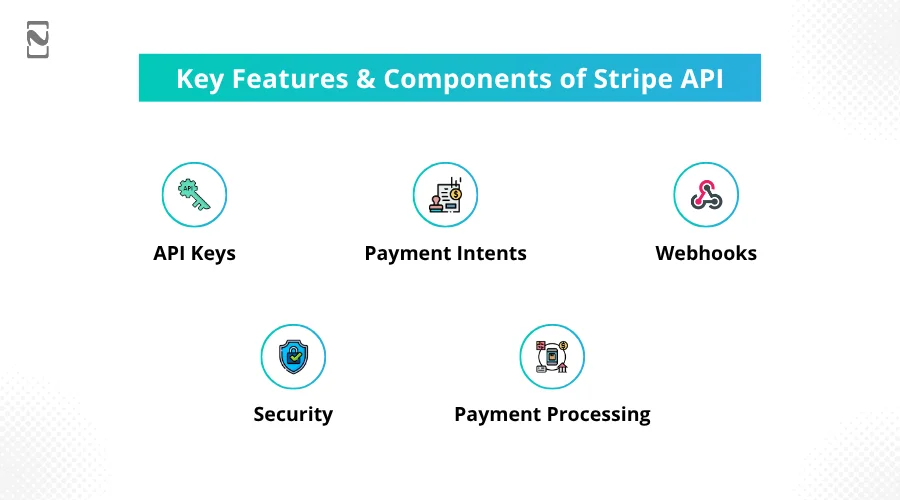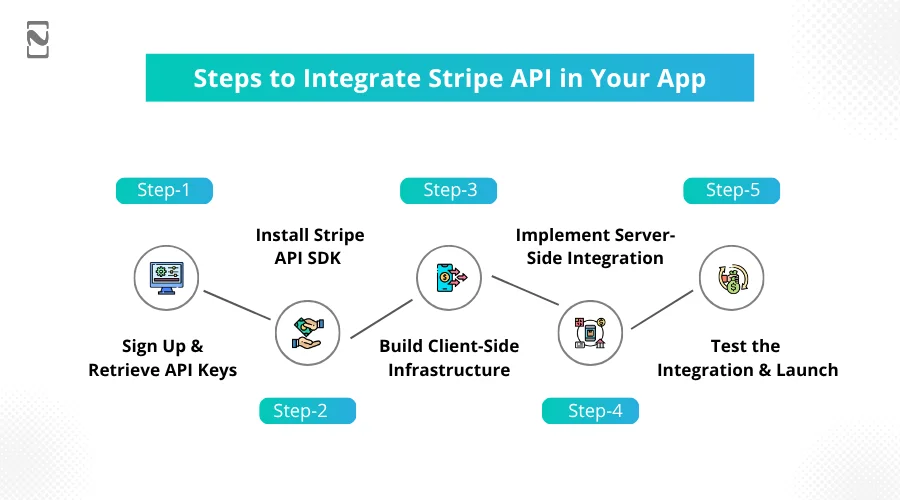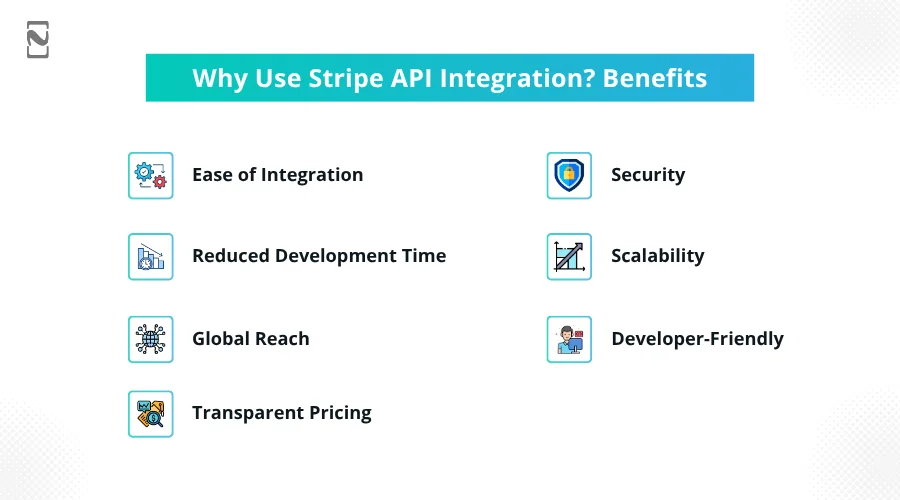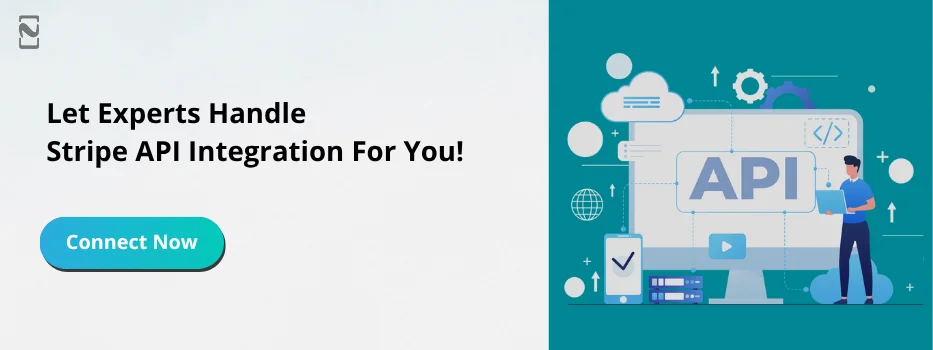Integrating a payment gateway is a mandatory step while building an app. Regardless of whether it is a fintech app, a food delivery app, or an e-commerce app, integrating payments and an internal wallet is a must, and that is where Stripe shines!
Helping young startups build a frictionless payment experience for their clients from the get-go, the Stripe API is one of the most preferred payment platforms.
The easiest way to access this highly functional payment solution is by simply integrating its API, which is also the reason why new businesses and apps are increasingly interested in using it. There is no hassle of building payment infrastructure from scratch for the best performance, as Stripe offers it with a simple API integration.
But is it really that simple? How do you integrate the Stripe API? What features does it offer? Where can the Stripe API shine? What are the key benefits of using Stripe API integration?
These are some questions that we are going to answer in this post. So if you are looking forward to integrating the Stripe API or are specifically searching for any of the above queries, then make sure you read this post till the end!
Without further ado, let’s get started.
What is the Stripe API? Key Features & Components
Stripe API is a collection of programming interfaces that allows a developer to integrate the service directly into an app, allowing it to be compatible with payments and other capabilities related to online transactions.
With this integration, a business becomes more equipped to manage payments, different transaction methods, subscriptions, and additional financial features that users require.
The Stripe API follows REST principles, using HTTP methods and JSON responses for efficient real-time processing crucial for businesses.

Some of the key components and features that the Stripe API offers are –
- API Keys: API keys are a key component as they are used to authenticate requests sent to the Stripe API to check whether it is in test or live mode.
- Payment Intent: Managing the complexity of payment flows and handling different payment methods and scenarios, the fintech APIs help a developer stay on top of the overall workflow of the app.
- Webhooks: As the name suggests, webhooks are hooks that trigger instant responses and notify your application when something happens on Stripe, be it an approved or declined transaction/payment.
- Security: Whenever payments and money are involved, security is of utmost priority. Stripe, being the top name in the industry, takes care of security requirements quite well and meets all the requirements to handle PCI compliance, keeping sensitive information intact.
- Payment Processing: What makes the Stripe API stand out from other available options in the market is its payment processing compatibility with different modes, such as credit cards, debit cards, and digital wallets within the app.
With these components backing the usability of the Stripe API, it becomes more and more efficient for a developer to use the API.
5 Steps to Integrate Stripe API in Your App
In order to make the most of these components and capabilities of the Stripe API, you need to understand the process.
Check it out in the next section. If you plan to get started with the integration of the Stripe API when building your application.

Here are the steps you need to follow -:
Step 1: Sign Up & Retrieve API Keys
The first thing to do when integrating the Stripe API into your app is to retrieve your API keys. Sign up on the platform and navigate to the developer’s section to find both keys that can be published and secret API keys.
Make sure you keep your secret keys secure as they can help in accessing server-side operations. You can find the developers section on your dashboard.
Step 2: Install Stripe API SDK
The next step is to install the Stripe API library, popularly referred to as the SDK, for the programming language that you have chosen.
The library can help you gain access to all the tools required to integrate with the application that you are building. Keep in mind that you choose the right library concerning the development language you are using for other elements.
Step 3: Build Client-Side Infrastructure
This is the step where you focus on setting up the client side of your payment gateway. You need to build a form that helps you collect all the necessary payment information. You can use Stripe Elements or Stripe Checkout, which are pre-built UI components.
Designing the client side is crucial so that your users feel confident enough to enter sensitive information. With the name and authority that Stripe provides, that should not be a problem.
Step 4: Implement Server-Side Integration
After you have designed the client side of the application, turn your attention to the server-side integration. The Stripe library and your secret key can be used here to authenticate with Stripe’s API.
The server side is responsible for processing the information collected from the client side to complete the transaction and share responses as per the transaction status.
Step 5: Test the Integration & Launch
Finishing the server-side integration completes the API integration process for Stripe. Check all the necessary functionalities again to ensure that the integration was successful.
Once you are satisfied with the testing of your Stripe API, it is time to launch it as a feature on your app.
Make sure that each of these steps is performed diligently. We highly recommend that you hire a professional developer to help you with all these steps, as they have a better command of implementing Stripe API integration.
Read Also: How to Integrate PayPal API?
Why Use Stripe API Integration? Benefits
Using Stripe API integration, an app becomes super compatible with online payments and is able to accept payments via multiple modes.
However, that is not the only reason why developers recommend using Stripe API integration. There are multiple benefits that this integration brings along.

Here are some of the most sought-after benefits that businesses and developers enjoy by implementing Stripe API Integrations –
- Ease of Integration: Stripe API offers simplified integration, making it easier for businesses to start accepting payments instantly.
- Reduced Development Time: Since the entire infrastructure is developed, integrating the API takes little time, thereby reducing the overall development time of a fintech app.
- Global Reach: Stripe is a global leader in payment solutions, helping businesses serve international customers effectively.
- Transparent Pricing: Stripe API has transparent pricing with no hidden fees, making it a trustworthy choice for new businesses.
- Security: The application offers robust internal security features and transaction encryption, ensuring greater security than other payment APIs while easily meeting regional compliance requirements for data security and privacy.
- Scalability: Stripe API integration can be scaled easily as per your business requirements, making it the perfect companion for your growing business.
- Developer-Friendly: Integrating with Stripe is easy, as libraries and SDKs are available online for various programming languages, simplifying the connection to your solution.
All these benefits make Stripe API integration one of the best decisions that you can make while deciding on how you plan to implement payment gateway integration.
You can finish integrations in a matter of days with perfection, provided you have experienced developers working on the process.
Read Also: Useful APIs For Your Next Project
Use Cases: Where Can You Use the Stripe API?
Stripe finds its use case in every possible niche you can think of. Even on charitable platforms, secure payment methods are necessary to ensure the safe transfer of donations.
Stripe is definitely a highly flexible integration that is compatible with multiple business models and finds its use in different scenarios around the world.
| Areas in Which Stripe Finds Its Use Cases | |
| 1. E-commerce Platforms | 11. Creator Economy |
| 2. In-person Payments | 12. Global Businesses |
| 3. Subscription Billing | 13. Finance Automation |
| 4. Usage-based Billing | 14. AI Companies |
| 5. Embedded Finance | 15. Crypto |
| 6. Online Payments | 16. Online Retailers |
| 7. Recurring Payments | 17. SaaS Companies |
| 8. Unified Commerce | 18. Marketplaces |
| 9. Platform and Marketplace Solutions | 19. Digital Content Platforms |
| 10. Payouts | 20. Subscription Box Services |
The whole idea behind sharing this list of use cases is to show how flexible Stripe API integration is. It integrates into any solution and adapts to industry needs for optimal use.
Even the best apps and platforms use the Stripe API as their go-to solution for improved payment processing.
Nimble AppGenie Can Help You With Stripe API Integration: Here’s How
After reading all of it, one thing is clear for sure: Stripe API integration is the easiest way to have a fully functioning payment solution integrated into your application without having to spend too much on building payment infrastructure.
If you are planning to integrate the Stripe API into your application, Nimble AppGenie is one of the best fintech app development company to get things done.
Connect with our experts today and share your vision for integrating the Stripe API, and they can complete the process for you easily, making it more and more impactful in the long run.
This integration might seem simple, but it has many complexities that need a professional’s expertise.
Connect with our experts and start your journey with a robust payment solution with Stripe API Integration.
Conclusion
Stripe is certainly a great integration to have on any platform, as it makes collecting payments super-easy for a business.
Not only does the API development, but it also makes the entire experience super smooth for both the merchant and the customer.
The whole point of integrating a payment solution like Stripe is to offer convenience to the user and simplify all the transactions for better accounting.
If you run a business or are planning to start one, Stripe API integration can be highly beneficial for you, and the best part is that there are several experts available in the market to help you with the integration.
With that said, we have reached the end of this post. I hope you got all your answers about Stripe API integration. Thanks for reading. Good luck!
FAQs

Niketan Sharma, CTO, Nimble AppGenie, is a tech enthusiast with more than a decade of experience in delivering high-value solutions that allow a brand to penetrate the market easily. With a strong hold on mobile app development, he is actively working to help businesses identify the potential of digital transformation by sharing insightful statistics, guides & blogs.
Table of Contents

No Comments
Comments are closed.